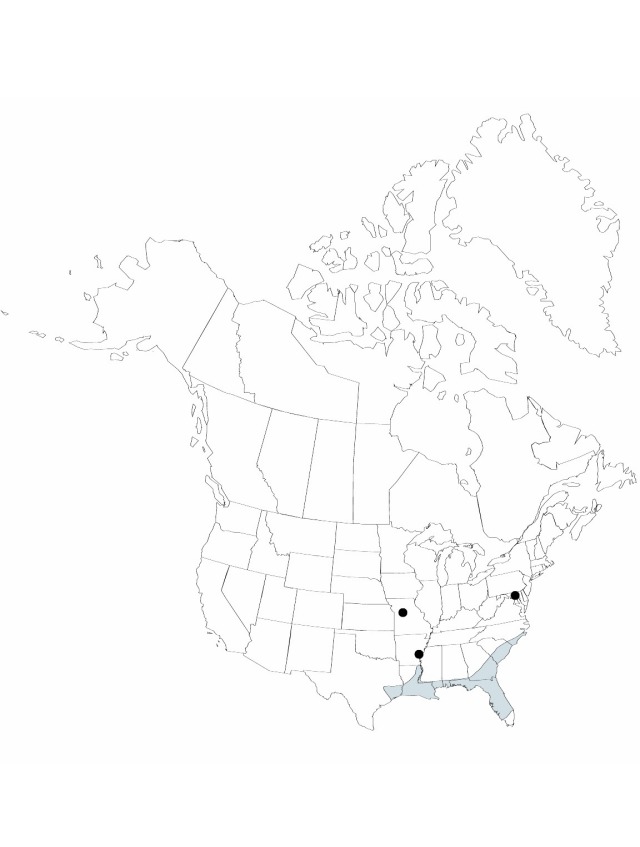Commelina caroliniana
Flora Caroliniana, secundum. 68. 1788.
Herbs, annual, diffusely spreading. Roots at nodes. Stems decumbent to scandent. Leaves: blade lanceolate to lanceolate-elliptic or lanceolate-oblong, 2.5–10.5 × 0.7–2.4 cm, margins scabrous, apex acute to acuminate, glabrous. Inflorescences: distal cyme vestigial, included (rarely 1-flowered and exserted); spathes solitary, bright green, paler basally, without contrasting veins, pedunculate, not at all to slightly falcate, 1.2–3 (–3.7) × 0.5–1 cm, margins distinct, usually ciliate, apex acuminate, glabrous or very sparsely pilose; peduncles 0.6–2.3 cm. Flowers bisexual; petals all blue, proximal petal white medially, smaller; medial stamen with white connective; staminodes 3; antherodes yellow, often with central maroon spot, cruciform. Capsules 3-locular, 2-valved, (5–) 6–8 mm. Seeds 5, dark-brown, 2.4–4.3 (–4.6) × (1.6–) 2–2.3 mm, smooth to faintly alveolate, mealy. 2n = ca. 86.
Phenology: Flowering summer–fall (rarely winter).
Habitat: Fields, roadsides, railroad rights-of-way, yards, waste places, especially in moist situations, weed in crops, especially rice, sugar cane and corn, and rarely in forests
Distribution

Introduced; Ala., Ark., Fla., Ga., La., Md., Miss., Mo., N.C., S.C., Tex., native, India